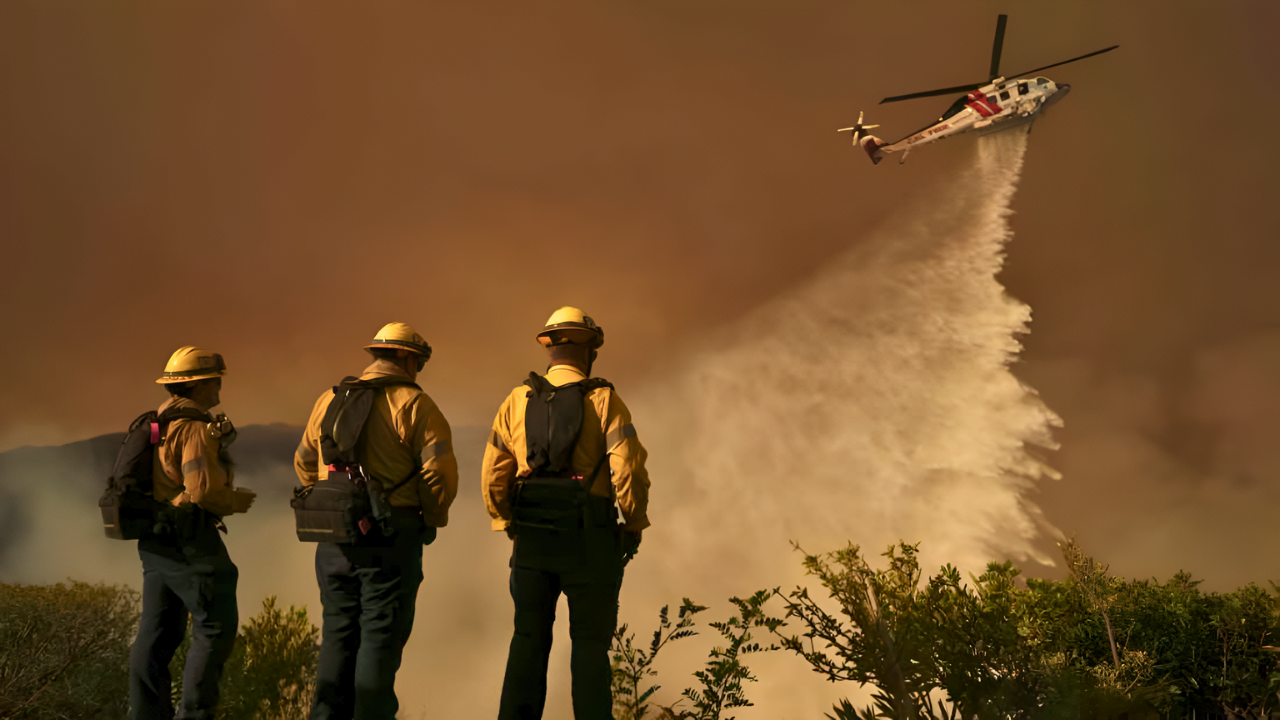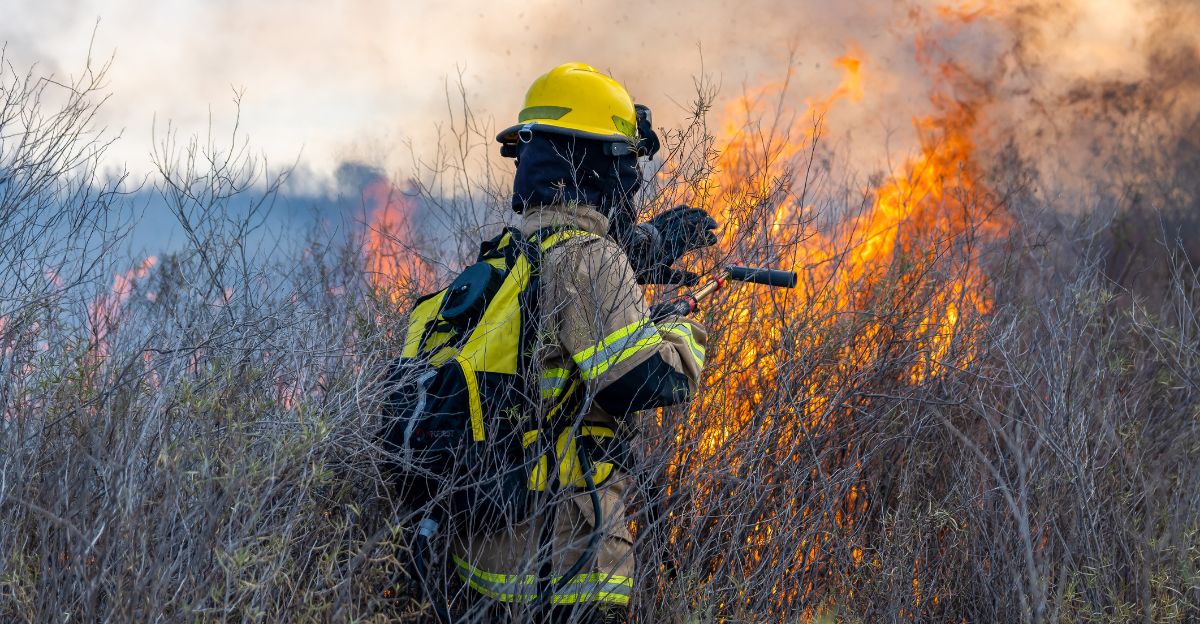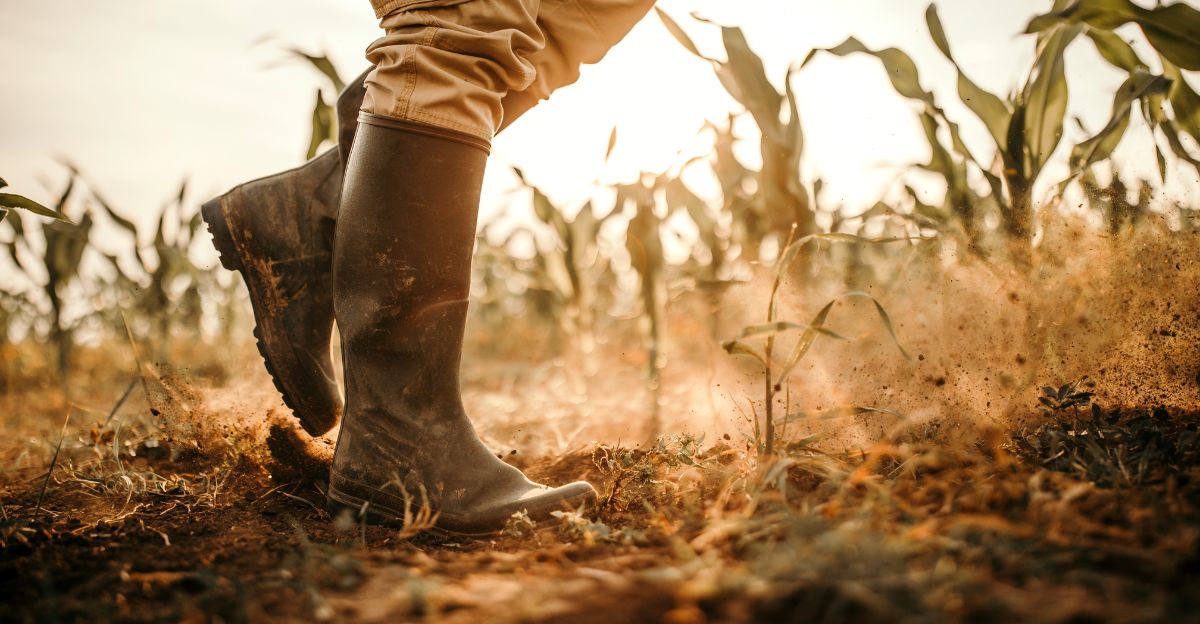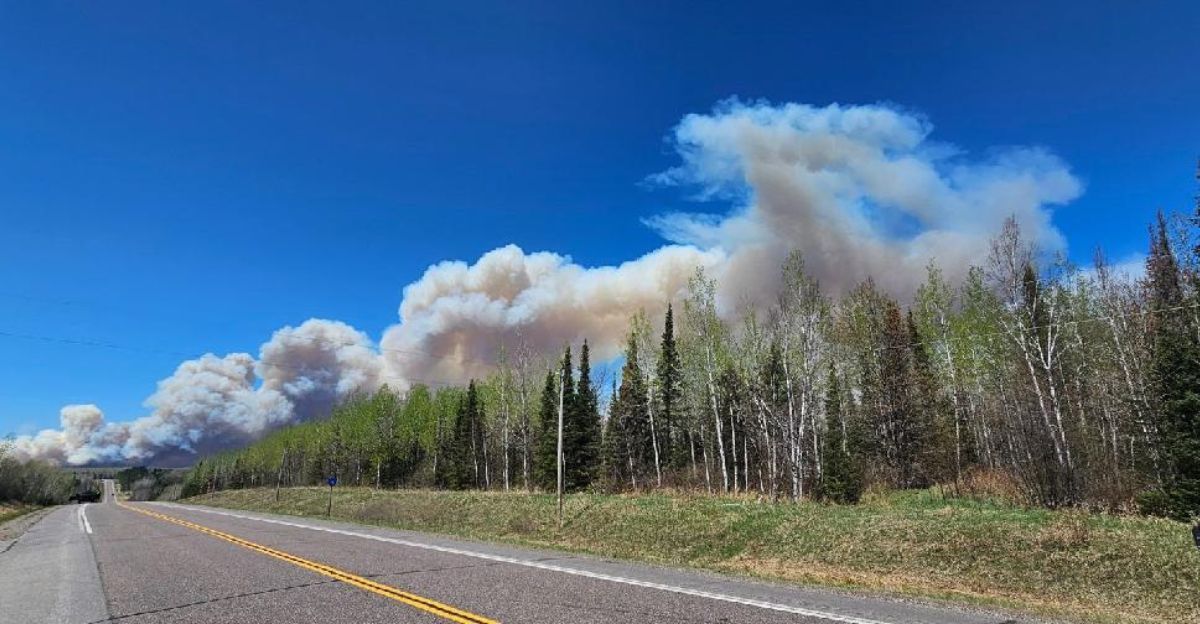
A stretch of the American heartland is on high alert as strong winds, dry fields, and record-breaking heat push Nebraska, Iowa, South Dakota, Minnesota, and Illinois into extreme fire danger. Red flag warnings now cover millions of acres, prompting officials to caution that even a single spark could ignite a fast-moving blaze. Nearly nine million residents are living under these alerts, an unusually wide swath for late October.
Emergency managers have urged residents to avoid igniting brush piles, using open flames, or driving across dry grass. “Conditions will be favorable for rapid fire spread,” the National Weather Service reminded residents in a regional advisory. Communities from the Great Plains to the upper Midwest have been asked to prepare evacuation plans and monitor local weather updates around the clock.
Winds and Weather Push Risk Higher

Meteorologists say this week’s threat combines rare atmospheric ingredients. Sustained winds between 20 and 35 miles per hour—gusting at times to 60—are sweeping across the region, creating conditions where embers can travel miles ahead of flames.
“This is one of our prime seasons to see red flag warnings,” said Kyle Knight, lead meteorologist at the National Weather Service (NWS). “Fall and spring bring wind and lower humidity before the wetter months arrive.”
Forecasters expect the elevated fire weather to move south into central Texas within days. NWS regional offices in both the Dakotas and Kansas described the current setup as “a textbook example” of how persistent drought and high winds combine to produce explosive fire potential.
Drought Turns Farmland into Fuel

Months of below-average rainfall have left grasslands, forests, and cropland tinder-dry. In Minnesota, much of the state is under top-level warning because soil moisture has fallen to one of its lowest late-October readings in a decade. Fields that once held summer corn and hay now crackle underfoot.
Farmers are among the most anxious. Across Iowa’s agricultural counties, grain operators report their communities are closely monitoring wind conditions. A single misstep in the fields—one spark from a combine—could undo a year’s work.
The current drought reflects a broader climate pattern: long stretches of heat and erratic precipitation that increase wildfire risk far beyond the Western U.S. According to the National Integrated Drought Information System, more than 40% of the continental U.S. remains abnormally dry entering November—an area roughly equivalent to the size of Western Europe.
Urban and Rural Front Lines

While rural fields face the highest ignition risk, urban residents are not immune. Fire departments in Minneapolis and Des Moines have urged homeowners near wooded parks and overgrown lots to prune vegetation and clear debris. “We want people to understand—wildfire isn’t just a western or rural issue anymore,” said Minneapolis Fire Chief Bryan Tyner. “In dry, windy conditions, a backyard fire pit can spread into a whole block in minutes.”
City authorities are also warning about air quality as smoke from several small wildfires drifts across state borders. Sensitive groups, including people with asthma, are advised to limit outdoor activity as fine-particle pollution rises. Meanwhile, gusting crosswinds have slowed truck traffic on Interstate 90 and forced temporary closures of smaller rural highways.
Firefighting crews across Minnesota and South Dakota are stationed for rapid response. The U.S. Forest Service maintains aerial firefighting resources near Superior National Forest, where wildfires earlier this year burned thousands of acres and forced evacuations.
Global Heat, Local Fear

The conditions unfolding in the Midwest mirror what fire scientists are seeing globally. Research from climate scientists has documented increasing autumn fire alerts across temperate regions since 2000, linked to extended drought and warmer night temperatures.
“Regions that historically had short, mild fire seasons are now seeing longer and more intense periods of risk,” said Jennifer Collins, a professor of environmental science at the University of South Florida. She called the Midwest “a clear example of how small climate shifts can magnify wildfire threats outside traditional zones.”
Locally, some residents are adapting in simple but crucial ways—storing garden equipment indoors, postponing outdoor burning, and checking emergency alerts daily. Across affected communities, residents report heightened vigilance about fire safety measures.
What Comes Next
Forecasters say only a substantial rainfall—at least one to two inches across the region—will significantly reduce the immediate threat. Yet long-term outlooks suggest continued dryness through early November. With meteorologists forecasting higher-than-average temperatures for several more weeks, the Midwest’s fire season may extend unusually late into the year.
Officials are emphasizing vigilance over panic. “We can’t control the wind or humidity, but we can reduce risk,” Gilman said. Across the region, voices like his reflect a broader message: stay informed, follow burn bans, and recognize that the modern wildfire map now includes America’s breadbasket.
As the heartland waits for rain, the red flags blanketing the Midwest serve as both a warning and a lesson—how swiftly weather extremes can redraw the boundaries of danger.